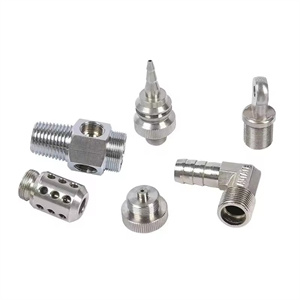CNC Turning is a CNC machining process in which non rotating tools move along a spiral trajectory while the workpiece rotates to achieve machining of the outer or inner surface (such as a hole). This machining method can achieve high-precision and high-efficiency cutting operations through computer programming control. The application of CNC Turning in industry is extensive and important, mainly reflected in the following aspects:
Automotive industry:
Axis components, such as transmission shafts, half shafts, camshafts, etc., ensure the transmission of automotive power and the normal operation of the engine.
For example, the automotive transmission shaft obtains high-precision cylindrical surfaces and accurate features such as shaft shoulders and threads through CNC turning.
Disc parts: brake discs, wheels, etc., to ensure the braking performance and driving stability of the vehicle.
Mechanical manufacturing industry:
Various types of shaft components, including machine tool spindles, screws, etc., provide precise motion and transmission for mechanical equipment.
For example, the spindle of a high-precision machine tool ensures its rotational accuracy through CNC turning.
Set type parts: such as bearing sleeves, bushings, etc., to ensure the accuracy of fit with other parts.
Mold manufacturing: CNC Turning plays a crucial role in mold manufacturing. Molds usually require high-precision and high reliability processing, and CNC Turning technology can meet these requirements, ensuring the dimensional accuracy and surface quality of the mold, thereby improving the quality and performance of the product.
Automobile manufacturing: CNC Turning is also widely used in automobile manufacturing. From engine components to body components, many key components require CNC Turning for processing. This processing method can ensure the accuracy and durability of the components, thereby improving the performance and safety of the car.
Medical equipment manufacturing: Medical equipment has extremely high requirements for accuracy and cleanliness, and CNC Turning can meet these requirements. For example, medical equipment such as artificial joints and surgical instruments require high-precision machining through CNC Turning to ensure their safe and effective use.
Advantages and characteristics:
High precision: CNC Turning technology can achieve micrometer level machining accuracy, ensuring product quality and performance.
High efficiency: Through computer programming control, CNC Turning can achieve automated and continuous processing, improving production efficiency.
Flexibility: CNC Turning technology can adapt to the processing needs of different materials and shapes, achieving flexible and diverse processing methods.
